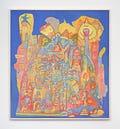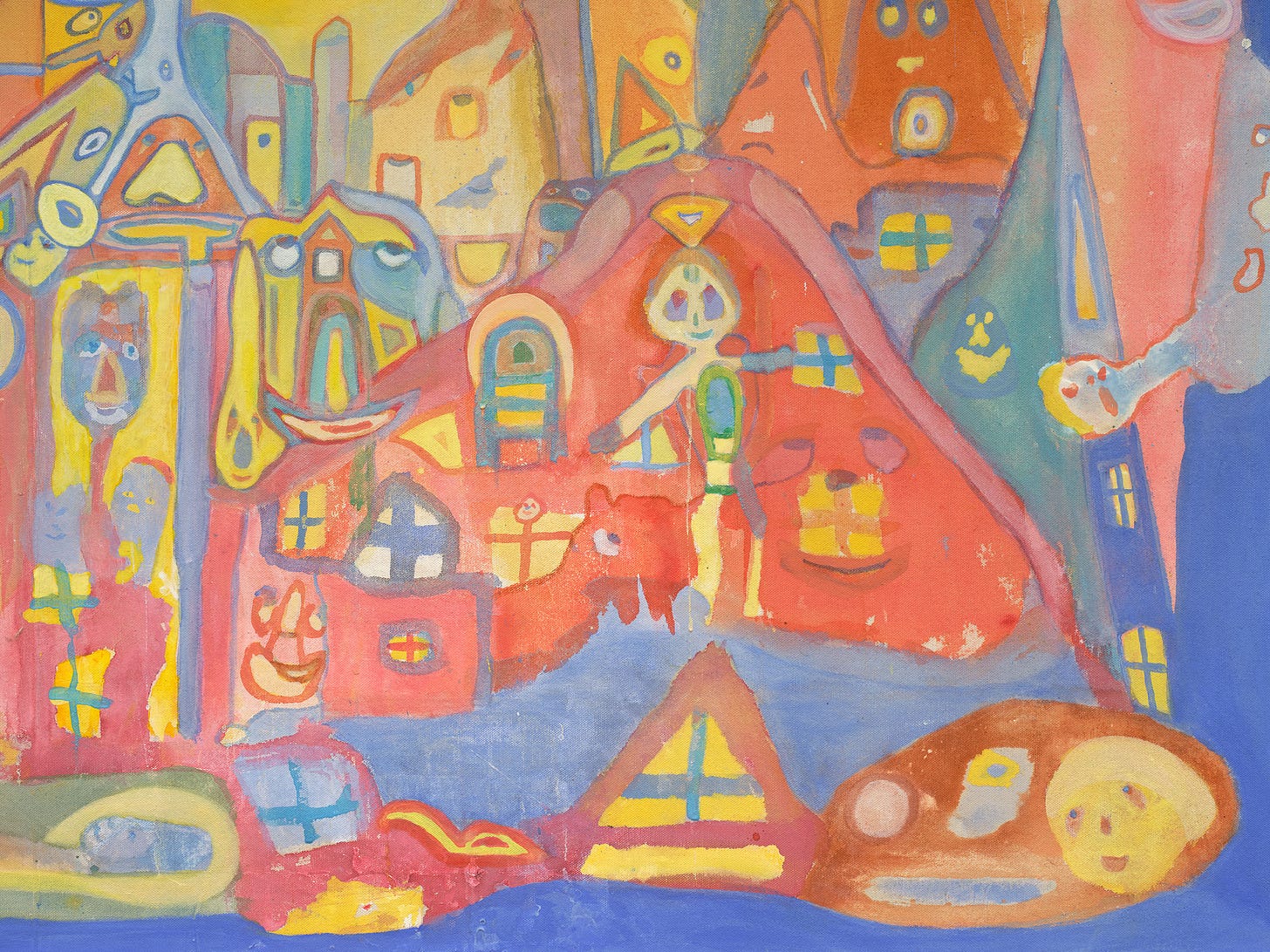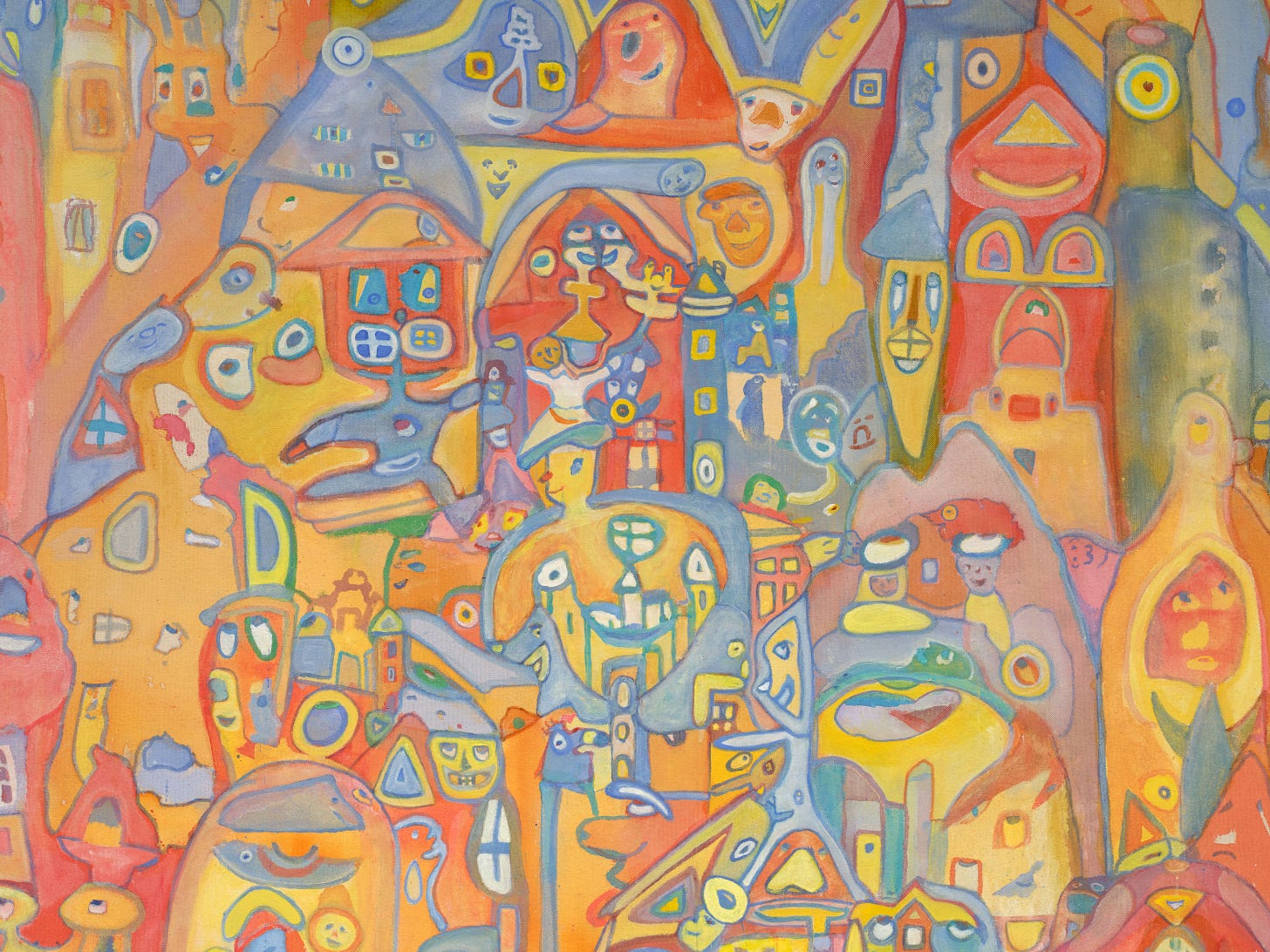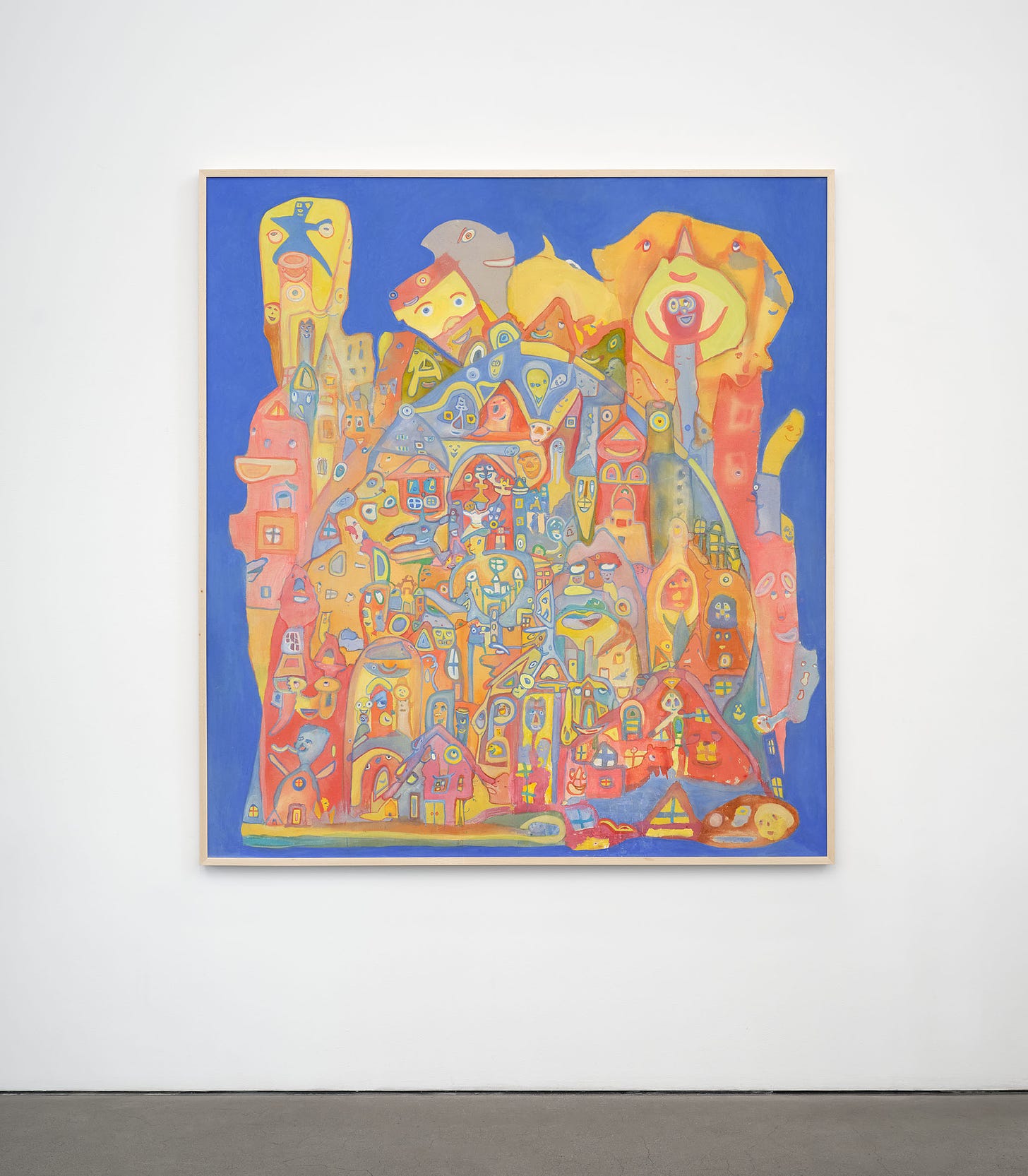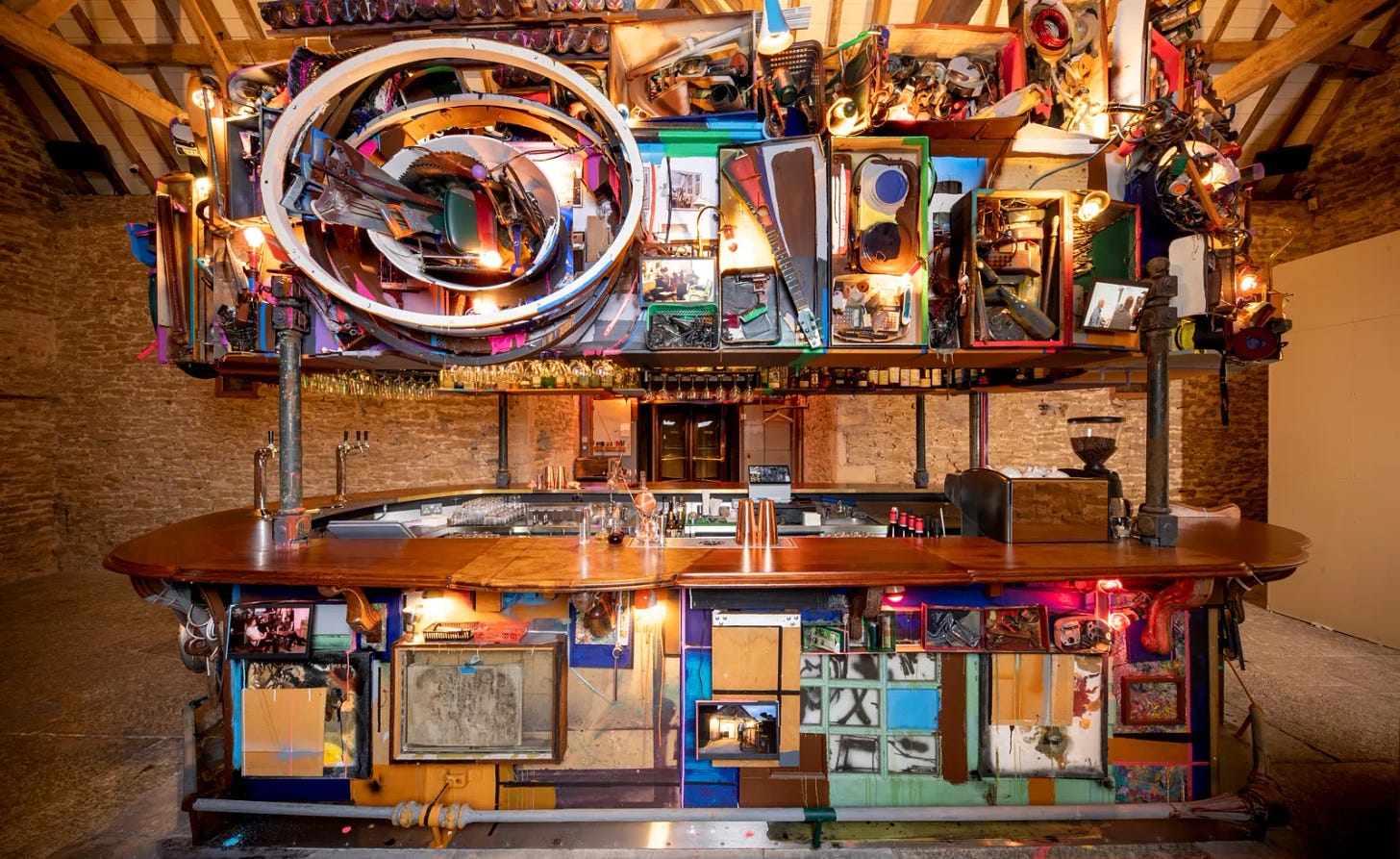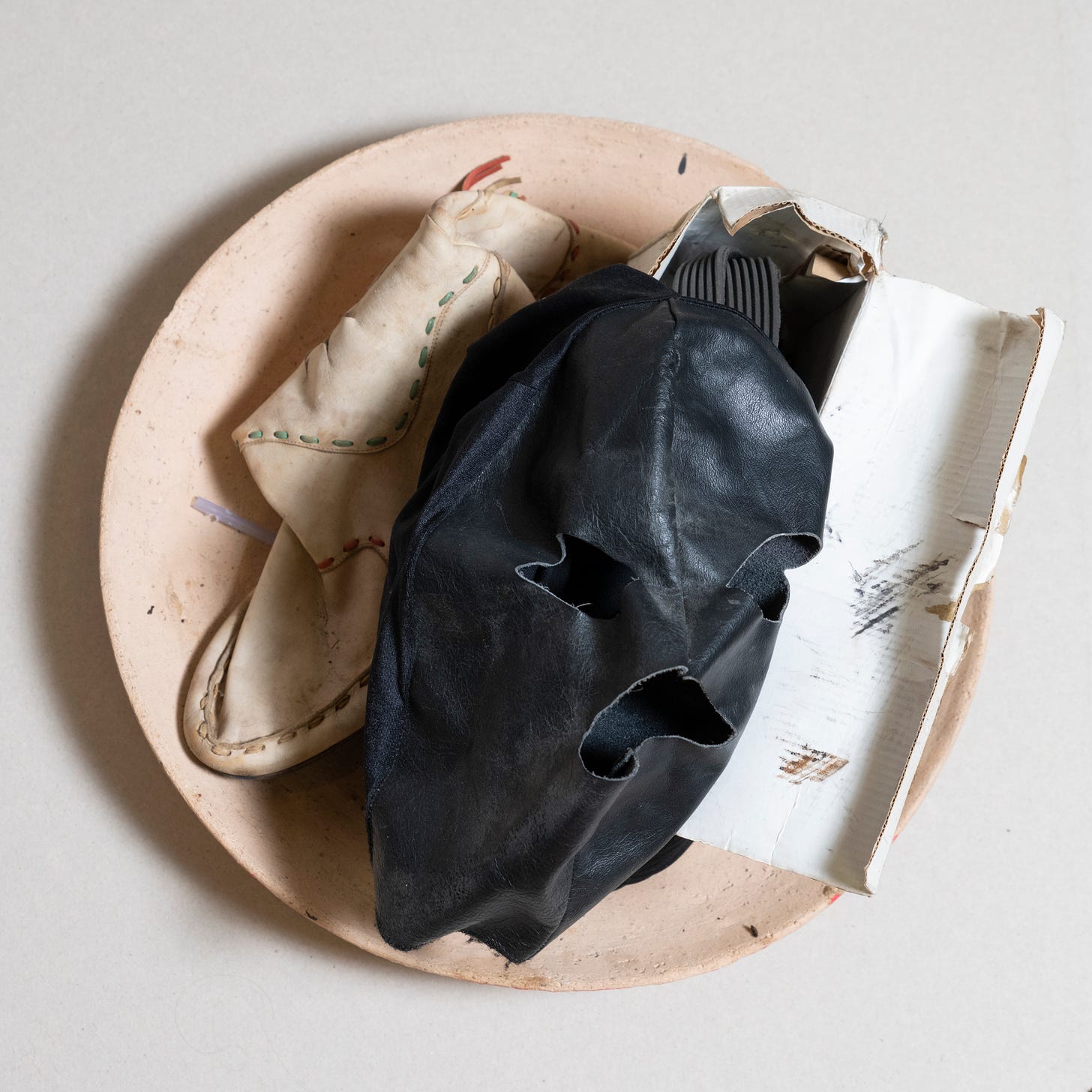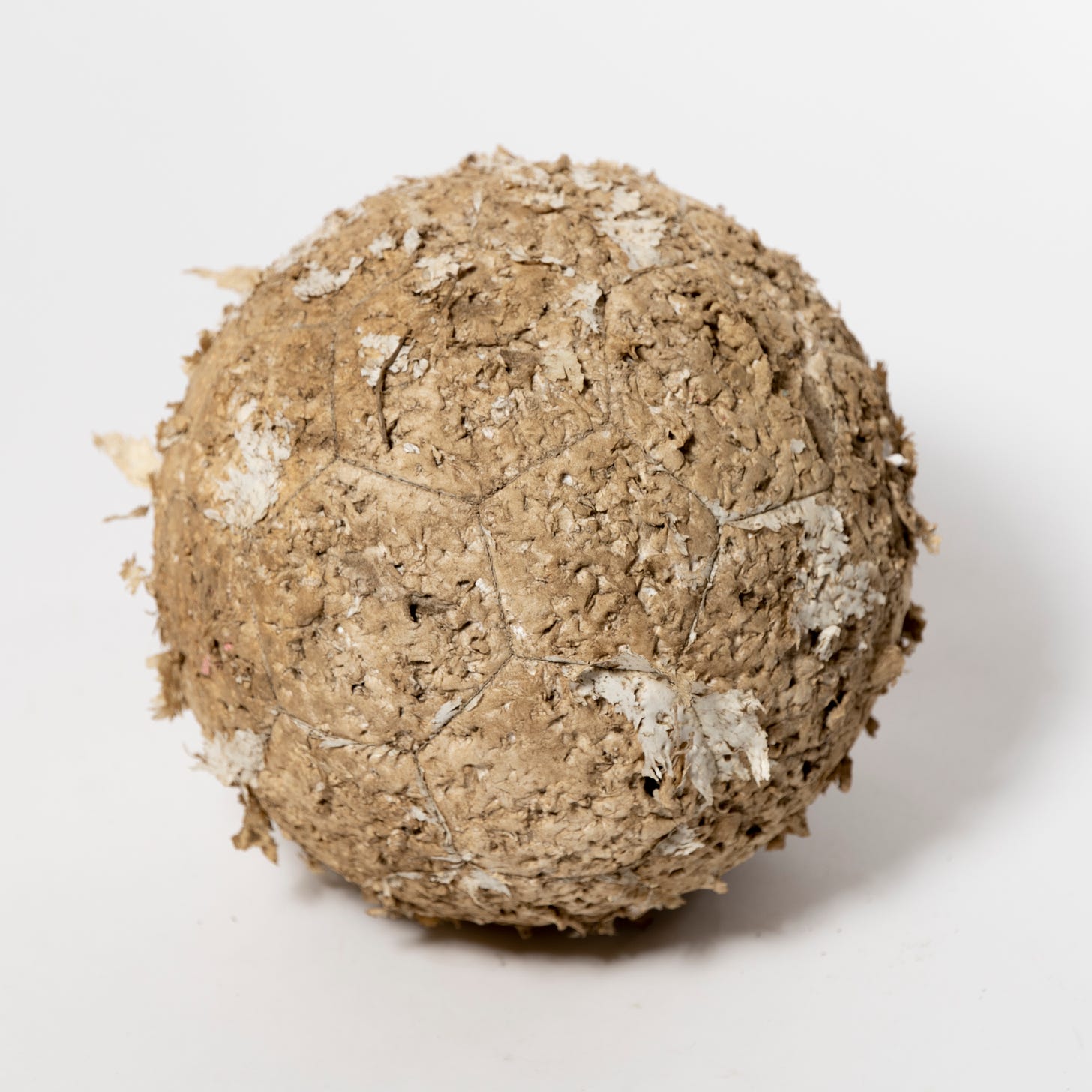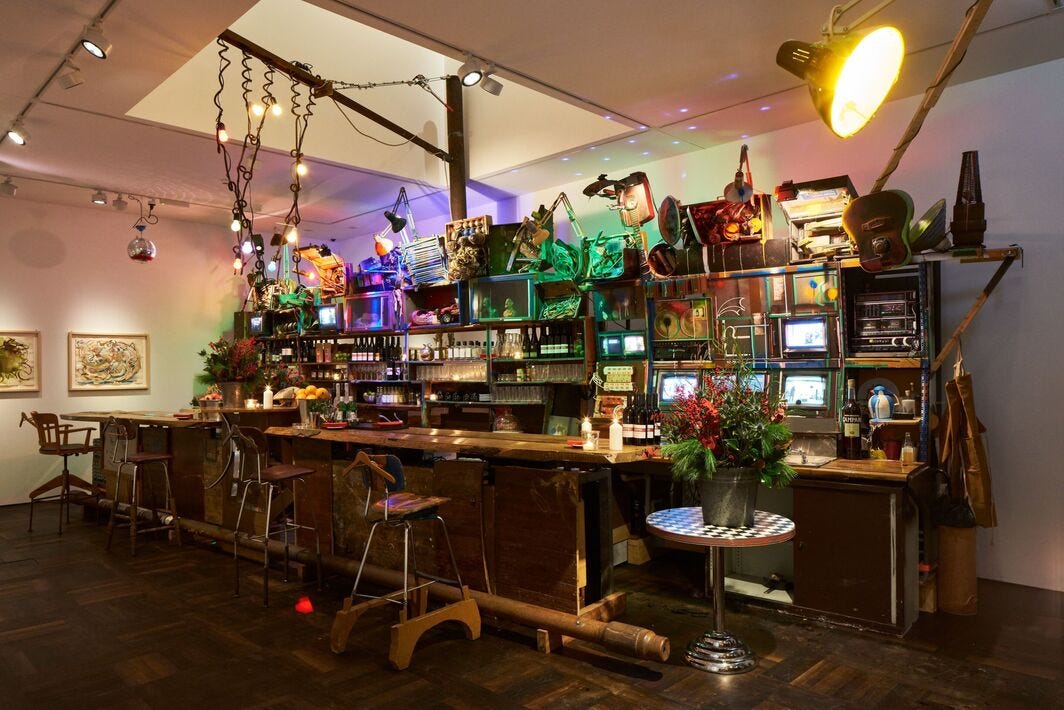1
Isle, 2024
milk paint and egg tempera on canvas
69 x 63 in
is featured in “How the Trees See the Stars” curated by Aaron Johnson at Gana Art.
Opens this week, November 23rd, Los Angeles
3
fantasia, my collaboration with Kool Music, is up now on bandcamp.
4
My interview with Icelandic artist, Oddur Roth, grandson of Dieter Roth, is in the current issue of Hauser & Wirth magazine, Ursula. Read the PDF or text below.
Dieter Roth likened his art career to a farm, a kind of creative territory cultivated over a lifetime, which could later be tended to and harvested by his children, primarily his son, Björn, and his grandchildren, Einar and Oddur, who carry no the work to this day.
Dieter rarely spoke of “art,” according to Bjorn and Oddur, who both learned the family business through working in the studio, not through formal art education. Dieter considered himself a “nebulous persona,” and his presence became more and more diffuse as the Roth family art- making machine evolved over time. Even his name was unstable; he liked to play with the spelling, reducing it in his most preferred version to the all- lowercase “diter rot,” which evoked one of his favored techniques for creation: decay. Roth is perhaps best-known for his sculptures made from old food— wedges of cheese filling suitcases, sausages in vitrines, chocolate self-portraits, all of which have continued to undergo biological transformation through the collaboration of maggots and mold. He often exhibited work in an unfinished, raw state, prioritizing the messy process over the refined product.
As unpredictable and interdisciplinary as Roth’s work could be, it involved certain refrains, one of which was the obsessive accumulation of material. He exhibited, among other things, his used worktables, his cluttered shelves, stacks of automatic drawings, hours of surveillance-style footage from the studio, libraries of cataloged trash (his “flat waste” series) and an ongoing series known as Roth Bars, tumultuous large- scale sculptural assemblages flanked with stools and countertops, works intended to function as communal pubs. Each bar is built from hundreds of objects, almost too many different varieties of cast-offs to enumerate: hoses, toasters, televisions, lamps, carpenter’s tools, electronics, metal gears, paint cans, children’s toys, clothing, bowling balls, buckets, sports equipment, studio detritus, photographs and practically anything else that caught or catches the Roths’ eyes.
After the first iteration (Bar 0) in Stuttgart in 1978, the bars became a repeating motif in Roth’s exhibitions, allowing visitors to sit inside a “material painting” and enjoy coffee and spirits, creating what Oddur, in a nod to Joseph Beuys’ utopian concept about life’s relation to art, calls “social sculpture.” Since Dieter’s death in 1998, Bjorn, Oddur and Einar have all taken over the Roth project, creating several ever-changing bars at Hauser & Wirth locations, each one an entirely distinct work of craftsmanship.
My first viewing of a Roth Bar took place in 2013 at Hauser & Wirth in New York, for “Bjorn Roth/Dieter Roth,” a feast of an exhibition that included a chocolate factory, two wall-sized segments of wooden floorboards ripped from the Roth studio in Iceland and a freshly installed bar on West 18th Street in Chelsea. I visited the show with another artist, Chuck Webster, and we found the bar so welcoming that we sat down to drink coffee and ended up drawing for hours. A week later, we returned
for another drawing session there and continued to do so while the show was open, eventually producing a small zine of our time there, called RotDraw. It was, for me, a manifestation of the generous and generative energy behind the Roth project, the ways in which the bars naturally open themselves to visitors and fellow artists, as well to the Roth family members.
Twelve years later, this past spring, I spoke with Oddur about the process of constructing the bars and about his childhood in the studio, learning the family business. The next day, he and Einar opened an expanded Roth Bar at Hauser & Wirth, Somerset, reimagined for the tenth anniversary of its original construction there—a new assemblage for gathering, improvisation, intuition and joy.
How do you arrive at the objects you use in the bars? They are found objects. At some point, they had a function or they were dear to someone’s life, which is how they escaped being discarded as trash. So we find these things and we use them. But we are not focusing on the object—just the form and how it balances out the whole. The function is irrelevant. But still, when people see them in the bar, they might have a connection with them, a memory from their childhood.
Most of the objects point toward a deep past. You can feel their age. Many people go through life without looking at the ground or sky, and they don’t notice how many objects pass through their hands. For instance, how many cell phones have you owned? You don’t think about it. If we are cleaning out a studio, we always create a pile that is the object pile. We filter the objects that have meaning to us. These objects are old but they are still good, better than many things made today.
Do you have particular methods of sourcing objects? It’s hard to source these things. Each object needs to be unique. You can’t just go out and buy most of these things, but I do like going to flea markets and reclamation yards. We will use anything, though. My friend was ripping out a bridge in Iceland and I told him to leave some of the parts in my yard. We will use them.
You also collect local objects from wherever you are installing. Yes. When I show up to a site, I drive from place to place with a local person who has knowledge of the area. It’s a different method for every location. Going to an antique store
and picking stuff off the shelf is not the same as finding these objects the way we do. But there is the problem that sometimes the people who have these objects don’t want to give them up. That is why you cannot fake Roth objects. What may be valuable to me may be worthless to you.
All this stuff must require tremendous storage. There are containers of Roth stuff at Hauser & Wirth locations around the globe. It’s interesting shipping this stuff, because the customs officers think we are trying to pull a fast one. But once they open the boxes, they clear them quickly. Nobody wants to go through the boxes. We shipped five tons from Iceland and picked up about the same amount here. It’s a lot.
Are any of these objects personally important to you? There’s an old synthesizer from the studio of my grandfather in Iceland. And there’s a photograph of me wearing pajamas, probably seven years old, playing the synthesizer.
Do you ever use objects with dark histories? Teddy Bears are the weirdest. Or dolls missing an eye. I think there’s a whale harpoon in New York. That thing definitely has a darkness behind it.
That soccer ball looks like it’s been peeled. I mean, it’s been kicked around [laughs]. When you take something out of context, in a photo or something like that, against
a grey backdrop, like we did, you suddenly see all of the history. If you saw it on the side of the road you wouldn’t think twice about it. And then you put it in a prestige location like a gallery, and people’s minds get going, and memories start to come up. You can get people to realize that life is not straight and narrow. It has many secrets and dark corners.
Is your home filled with these kinds of objects? If you are asking if I live like a hoarder, I don’t have a pile of this stuff in my living room, but there are containers everywhere. For instance, I just located a box of the interior of a restaurant that was being torn out. I’m always collecting, because we bring extra material for all the bars. We often need to make bars bigger when when reinstall them. They are each a growing organism, and it’s an ongoing process. It’s all the same methods used by my grandfather, from the beginning. There’s a continuity across generations.
How did the first bar come to be? It started as one of Dieter’s material paintings and then the bar was added. It became a social sculpture. It’s not about drinking. It’s about people enjoying themselves and changing the boundary of art. People always ask, “Can I sit here? Can I touch this?”
In the beginning every bottle of beer that was consumed ended up getting worked back into the sculpture. Yes. But we could not continue this once it became a commercial project. There would be no space for art anymore.
How did you begin to work with your grandfather?
It started when I was ten or so. If my grandfather was in Iceland, I would skip school and just go to the studio and work with him on material paintings and shelves. Then I became more involved in my late teenage years, but I never looked at it as art. Just as life. You have a different view when you are born into this. What I was taught was: Believe in yourself and do what you want to do and maybe somebody else likes it or not. But then again, it wasn’t really a “teaching.” I only realized later that I was being taught how to balance colors and work with forms and master the materials.
Was your working relationship with your father, Bjorn, similar? Yes. We worked on many of the shelves together. The idea of the bar was revived when we created the bar in Iceland and moved it to New York in 2013. Then we made one in Somerset a few years later.
How long did it take you to construct this bar? In a way, it’s never finished. But you have to stop at some point, of course. We install until we are satisfied, but then it moves at some point and grows again. This process for Somerset has been about four months. All on site. We turned the whole residency at Hauser & Wirth into a design office, metal shop and photography studio, where we photographed the objects for a small booklet we released. And the bar in New York at the new 18th Street site has taken thousands of man- hours, as it’s been moved from one location to another, always changing, always adapting to the space to get the right atmosphere around it. And each time, we also must consider its function. Some bars are more visual but the one in Somerset serves 200 to 500 people a day, with five bartenders and a cocktail station.
Do you think about the future of the Roth lineage? None of this is intentional. This is just what I’ve done and what we are doing. We’ll see what happens. There’s no higher scheme. It would stop being spontaneous and real. It would stop being crazy. It would be commercial. But, of course, you need a lot of money to fund these things. It’s a slippery slope. So we take one piece at a time. One idea at a time. Some ideas are good and some are bad, but we don’t know until we’ve done them. It has to intrigue us. Otherwise, there’s no point. So we stick to what is real. We don’t change for better critiques or new trends. Wherever the road takes us, that’s what we do.
Is this a lesson from Dieter? Yes. You have to make your own opinion and believe in yourself. If someone likes it, great. If they hate it, that’s great, too. But these things do not interfere with the work, basically.
Do you try to transform the larger project that has been passed to you? Do you want to preserve it? Both? No person is the same. And, of course, the times change. There are now possibilities of managing things digitally. Media has changed a lot. As soon as something is out there, it’s everywhere now. That was not the case before. But generally, the ideas are the same. The end goal is the same. It’s about trying to figure out what life is about and have fun while doing it. And making art that is also a bar—it doesn’t sound so bad.
Not at all. We do this out of sheer joy. It’s different from when my grandfather started out. He had to choose between affording art materials or affording food. We don’t have that problem. And we only do the projects that we like. That’s a strong position to be in. It allows you to achieve better things.
Do you have projects on the horizon? There are projects ahead, but I do not think about them until they are certain. I prefer the projects that are spontaneous. There’s so much talk in life for things that never come to be. I prefer action. You know, there are three kinds of people in this world: people who make things happen, people who wait for things to happen and people who wonder what the hell happened. So when we take a project, it’s full on. It’s like a film or a construction site. Then, we move onto the next one. No regrets. No second thoughts. When it’s done, it’s done. That’s a valuable lesson I was taught by my grandfather. It’s what you do today that counts.
5
You can read the two editions of RotDraw, the Dieter Rot zine I made with Chuck Webster, at the links below.

